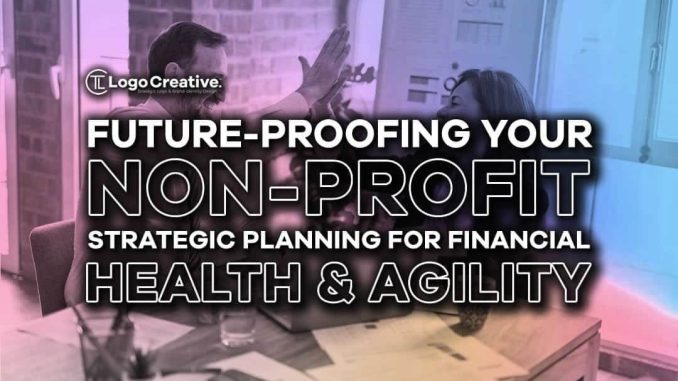
Designing a future-proof insurance plan requires more than simply selecting coverage based on today’s risks. It demands a forward-thinking mindset, one that anticipates change, embraces flexibility, and aligns protection with evolving personal or business goals. In a world where uncertainty is constant and the pace of transformation is accelerating, insurance must be treated not as a static product but as a dynamic strategy. The goal is to build a plan that not only responds to current needs but adapts seamlessly to whatever lies ahead.
The foundation of a future-proof insurance plan begins with a deep understanding of risk exposure. This means looking beyond the obvious and considering how emerging trends, lifestyle shifts, and economic developments could impact your protection needs. For a business, this might involve assessing how digital transformation introduces new vulnerabilities, such as cyber threats or data breaches. For individuals, it could mean accounting for changes in family structure, career trajectory, or geographic location. The key is to think holistically and recognize that risk is not confined to what’s visible today—it’s shaped by what’s possible tomorrow.
Once risks are identified, the next step is to ensure that coverage is both comprehensive and scalable. A future-proof plan should be built with flexibility in mind, allowing for adjustments as circumstances evolve. For example, a growing business may start with basic liability and property insurance but later require coverage for intellectual property, international operations, or employee benefits. Similarly, a young professional might begin with renters and health insurance, then expand to include life, disability, and long-term care as responsibilities increase. The ability to layer coverage over time ensures that protection keeps pace with growth and complexity.
Technology plays a pivotal role in future-proofing insurance. Digital platforms now offer real-time policy management, predictive analytics, and personalized recommendations based on behavior and trends. These tools make it easier to monitor coverage, identify gaps, and make timely adjustments. For instance, smart home devices can alert insurers to potential hazards, triggering preventive measures and reducing claims. Telematics in auto insurance can reward safe driving with lower premiums. These innovations not only enhance efficiency but also foster a more proactive approach to risk management, turning insurance into a living part of your financial ecosystem.
Another essential element is clarity. A future-proof insurance plan must be easy to understand and transparent in its terms. Policyholders should know exactly what is covered, what exclusions apply, and how claims are handled. This clarity reduces the likelihood of unpleasant surprises and empowers individuals and businesses to make informed decisions. It also facilitates better communication with advisors, brokers, and insurers, ensuring that everyone is aligned in their expectations and responsibilities. When coverage is clear, it becomes a reliable tool rather than a source of confusion.
Regular review is critical to maintaining relevance. Insurance needs are not static, and neither should your plan be. Annual check-ins, triggered by life events or business milestones, help ensure that coverage remains aligned with reality. A new home, a major purchase, a shift in operations, or a change in income can all warrant a reassessment. These reviews should be more than administrative—they should be strategic conversations about goals, risks, and opportunities. By staying engaged with your insurance portfolio, you maintain control and avoid the pitfalls of underinsurance or outdated protection.
Collaboration with a trusted advisor adds depth to the process. Insurance professionals bring market insight, technical expertise, and a consultative approach that can uncover risks you may not have considered. They can help tailor coverage to your specific needs, recommend enhancements, and guide you through complex decisions. More importantly, they serve as ongoing partners, helping you navigate changes and stay ahead of emerging threats. This relationship transforms insurance from a transaction into a strategic alliance, one that supports resilience and growth.
Financial alignment is another cornerstone of a future-proof plan. Coverage should reflect not only your risk exposure but also your financial capacity and priorities. Balancing premiums, deductibles, and coverage limits requires thoughtful consideration. A plan that offers robust protection but strains your budget may not be sustainable, while a low-cost policy with minimal coverage could leave you vulnerable. The goal is to find a balance that supports both security and financial health, allowing you to invest confidently in other areas of life or business.
Education is equally important. Understanding the mechanics of insurance—how policies are structured, what triggers a claim, and how to optimize coverage—empowers you to engage actively with your plan. It also fosters better decision-making and reduces reliance on assumptions. Whether through workshops, consultations, or digital resources, investing in insurance literacy pays dividends in preparedness and peace of mind. When you understand your coverage, you’re better equipped to use it effectively and advocate for your needs.
Ultimately, designing a future-proof insurance plan is about embracing change rather than fearing it. It’s about building a framework that supports your ambitions, protects your assets, and evolves with your journey. In a landscape defined by volatility and innovation, insurance must be agile, responsive, and deeply integrated into your broader strategy. By thinking ahead, staying informed, and engaging with trusted partners, you create a plan that doesn’t just react to risk—it anticipates it. And in doing so, you transform insurance from a passive safeguard into an active enabler of confidence and continuity.